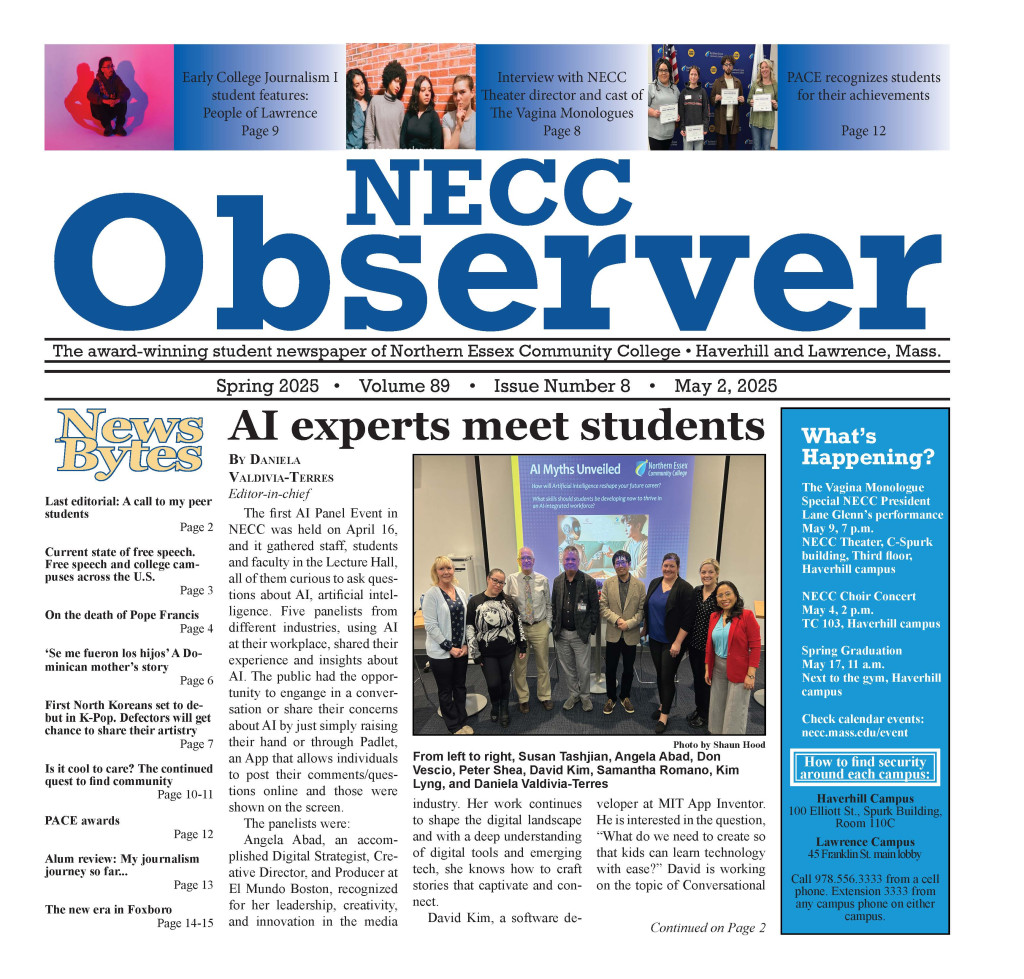Considering that I work full time, play in a band, write for the NECC Observer, take care of my elderly mother and take classes at NECC, I really had no business taking on an Honors Project. When Professor Stephen Slaner presented the idea in his American Government & Politics course, not one student responded. Knowing that I was a writing major, he looked my way with a big smile and said, “I bet you could do a great project.”
Just when you start to question your very existence on this planet, someone has to go and give you a huge ego boost. So I agreed to write a proposal for my paper and declared to Slaner that my topic would be way outside the box and non-negotiable. Proposals were due the very next day. Although I had worked after school, I stayed up late writing it and was just about to email my idea for “Fueling the Mosh Pit: Heavy Metal Reflects on the Trauma of War” to Honors Coordinator Ginger Hurajt when hundreds of NECC student’s accounts were accidentally deleted. I just sat at my desk and cried for a few minutes before realizing that the sink was filled with dishes and that I had never washed my husband’s favorite Slayer shirt, as promised.
I would be lying if I didn’t say that I was a bit relieved to have missed the deadline. I thought “Who do I think I am? I don’t have time for extra homework!”
In light of the technical difficulties, Hurajt agreed to accept late entries. I don’t know why I was surprised, she’s pretty flexible when a student’s success is involved.
Inching my way toward graduation, one course at a time since 2011, I often wonder why I’m even in school at the age of 43. Feeling guilty about spending time on homework is something that I struggle with often. Giving up a nine-hour shift because I have a research paper to do has certainly raised some concern at the dinner table.
My husband asked, “Are you getting paid for this project?”
“No.” I said. “But the professor gets $200.”
“What do you get?”
“Well, nothing, except for a notation on my transcript,” I answered sadly.
After careful consideration and accepting four extra shifts at work, I had decided to drop the project. However, before I could inform Slaner of my disappointing news, I received an email from Hurajt, indicating that my project proposal had been accepted and the Honors Committee was looking forward to reading it.
So, once again I found myself basking in the encouragement of my mentors and figured, “I think I can make this work.” But at what cost?
A 10-15 page research paper, an additional essay explaining the process of the researching of the paper, a detailed presentation to the class and a giant poster highlighting your main ideas for the paper. This seems like a lot of work for someone who doesn’t work after school. What was I thinking?
As a professional procrastinator, I’m no stranger to pulling an all-nighter to meet an academic deadline. But things started to get a little too real when I realized that I was cutting hair on three hours of sleep and I told my mother I couldn’t take her Christmas shopping. Talk about feeling like the worst wife and daughter in the world. Surprisingly, with four days to spare, I finally clicked print at 3:00 a.m. and as I was putting the already wrinkled laundry away, I thought to myself, “I can’t believe I wasted 40 hours on this project and it doesn’t even count.”
The alarm went off way too soon and off to class I went. After presenting my project to the class, I dragged my tri-fold poster to the Tech Center for an Honors Poster Session, where the projects are viewed by members of the Honors Committee and other faculty and students. I was overwhelmed by the encouragement and praise offered by all who attended.
Although I am exhausted from the work, the overall experience has left me with a profound sense of accomplishment. I realize that at the end of the day, not all rewards are monetary. Just knowing that people believe in me and support my academic adventure makes it worth my while.

